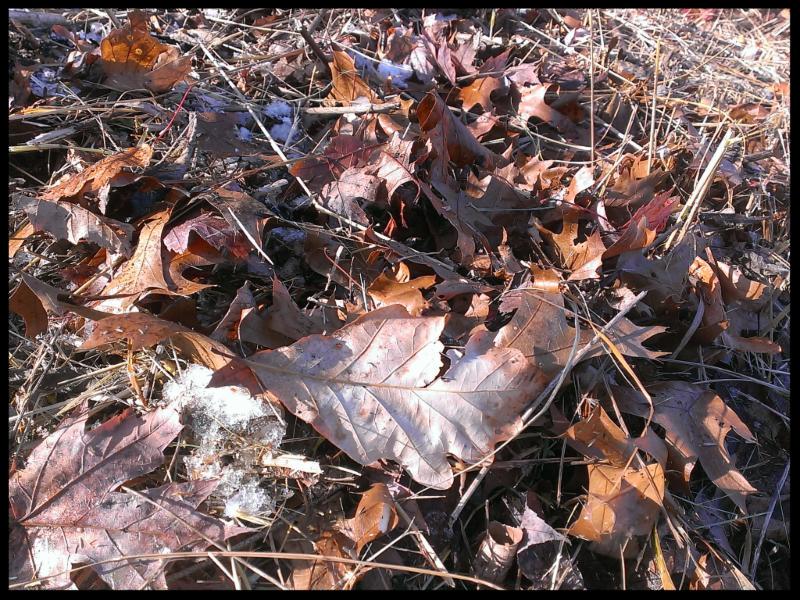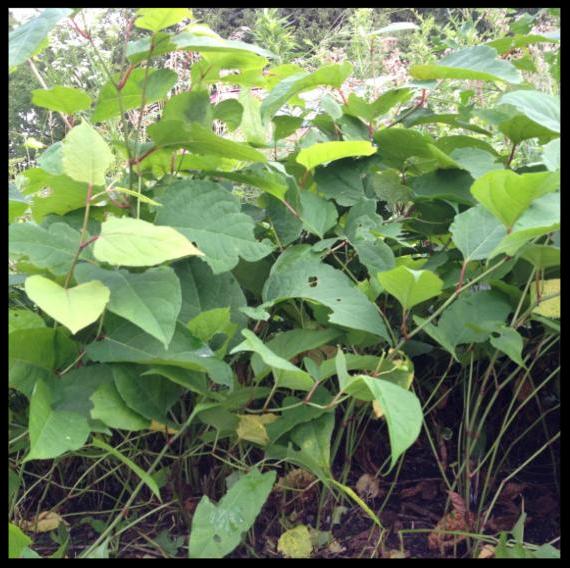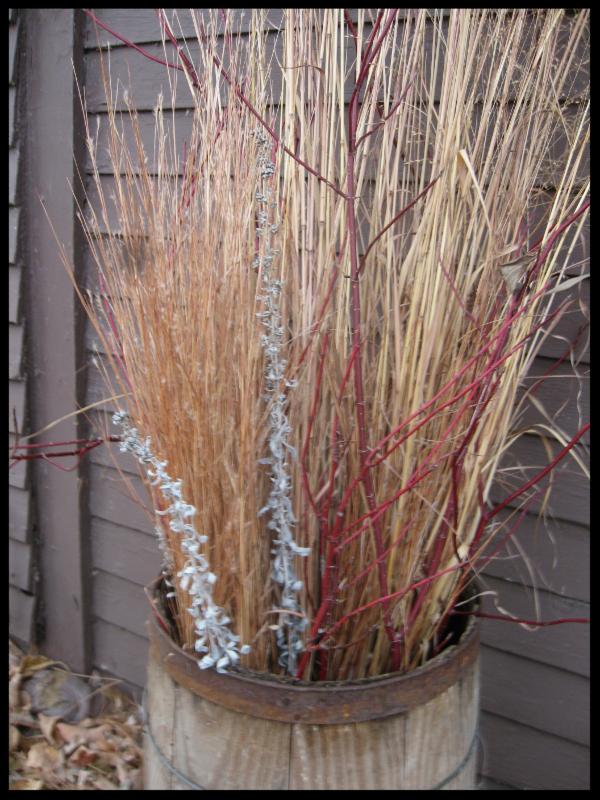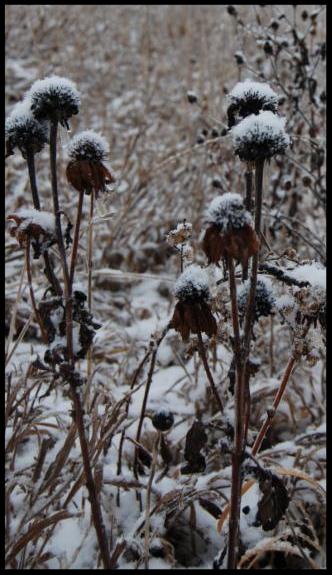|
November Article
|
Native Plants: A Critical Winter Refuge
This is the time of year to reflect and be thankful for all that we have - friends, family, health, and our amazing Minnesota environment. Our natural surroundings add to our health, spirit, and quality of life. Restored areas provide us with breath-taking native plants, essential wildlife habitats, water quality preservation and much, much more!
This time of year it might be tempting to grab a weed whip or a mower and go to town in your restoration. After all, the flowers are done blooming and it's time to "clean up", right? Well, hold on a minute. The plants might be done putting on amazing shows of color, but your natural area is still providing critical ecological benefits. Here are a few reasons why it is important to keep your senesced plant material up through the winter and into spring.
During our Minnesota winters, a multitude of animal
 species are actively looking for food and shelter. Severe winters present even more challenging conditions. In our urban areas, manicured landscapes, like turf grass lawns, can be considered biological wastelands and make winter tough for animals. On the flip side, restoration areas are critical biological oases. Animals like birds, mice, rabbits, and many others rely on native plant seeds for food, and dormant grasses and stalks for shelter to stay warm. Butterflies, bees, moths, beetles, and other insects also use leaf litter and other debris to overwinter, making our restorations even more important to pollinators.
species are actively looking for food and shelter. Severe winters present even more challenging conditions. In our urban areas, manicured landscapes, like turf grass lawns, can be considered biological wastelands and make winter tough for animals. On the flip side, restoration areas are critical biological oases. Animals like birds, mice, rabbits, and many others rely on native plant seeds for food, and dormant grasses and stalks for shelter to stay warm. Butterflies, bees, moths, beetles, and other insects also use leaf litter and other debris to overwinter, making our restorations even more important to pollinators.
 In terms of aesthetics, leaving material in your restoration can also be eye-catching when the snow and ice start to fly. Looking outdoors to a winter wonderland and spotting snow-covered bergamot heads, red-twig dogwood branches seemingly glowing out of the snow, and vibrant colored little bluestem make us pause and give thanks. Birds that stick around, like the Cardinal, Blue Jay, and Chickadee, will also appreciate the nice mix of Thanksgiving Day seeds.
In terms of aesthetics, leaving material in your restoration can also be eye-catching when the snow and ice start to fly. Looking outdoors to a winter wonderland and spotting snow-covered bergamot heads, red-twig dogwood branches seemingly glowing out of the snow, and vibrant colored little bluestem make us pause and give thanks. Birds that stick around, like the Cardinal, Blue Jay, and Chickadee, will also appreciate the nice mix of Thanksgiving Day seeds.
Even leaves can serve a purpose if you let them sit in your yard or restoration. Leaves can be thought of as natural fertilizer. Phosphorus, nitrogen, and other nutrients are slowly released into the soil as the leaf material decomposes. The U of MN Extension office now suggests to mulch leaves, as much as possible, in lawn areas and just let them sit in natural areas. When we take leaves away, only to add fertilizer to our lawns in the summer, we are wasting resources. Research also suggests that a leaf cover provides a natural weed barrier.

So even though you might feel like your restoration is only valuable during the growing season, this just isn't the case. Fight the urge to cut down and clean up. Instead, just grab a warm cup of tea, look out the window, and know that your undisturbed natural area is providing very important food and cover - a critical winter refuge for a multitude of animal species.
|
Natural Shore Has Moved!
We have moved a mile from our Maple Plain location to a new office in neighboring Independence, MN. Our new location will allow us to better serve our clients' needs.
Our new retail nursery address is:
1480 County Rd 90. Independence MN 55359
Interested in Native Plants? Contact our Greenhouse Manager Jill at [email protected] |
|
Native Plant of the Month
|
Black Eyed Susan
Rudbeckia hirta 
Moisture: Moist or Dry
Exposure: Full Sun or Partial Shade
Color: Yellow
Blooms: June-October
Height:1-3 Feet
Black Eyed Susan is an attractive short-lived biennial. The first year it has a basal rosette and then blooms the second year. The whole plant (stems and leaves) are covered with bristly hairs. Their leaves are lance-shaped and dark green. The pretty orange to orange-yellow ray florets are surrounded by a dark brown center of fertile disk florets. Black Eyed Susan tolerates heat and drought and is deer resistant. This plant grows well in sun to part sun and moist to dry, well-drained soils. Found in dry to mesic prairies, old fields, roadsides, and railroads. Their flowers attract butterflies, bees, and birds. Their leaves and roots were used in folk medicine and a yellow dye was obtained from the plant.
|
|
Invasive Plant of the Month
|

Japanese Knotweed
Fallopia japonica
Exposure: Sun or Partial Shade
Moisture: Moist
Height: 6-9 Feet
Blooms: August-September
This is an invasive, somewhat woody perennial plant that is very aggressive and hard to control once stands become established. They have large, round leaves with a pointed tip that are toothless and alternate on the stem. Their stems are large, thick, and hollow like bamboo; giving it another common name, Mexican Bamboo. Their small, white flowers are orientated in clusters at the leaf axils. This is a very fast growing plant that can hybridize with other species of knotweed. Their rhizomes are very prolific and help stands of this plant grow outside its original ornamental planting.
Management of these infestations can take years as energy reserves in the rhizomes are slowly depleted. Cut stems can easily re-sprout and further the infestation. Best strategies include cutting the infestation twice during the growing season and then spraying it with herbicide in the late fall right before the first freeze.
|
Hoverfly 
Helophilus fasciatus
Range
: Throughout North America
Identification
: These flies have markings that mimic bees and wasps. They have vertical alternating black and yellow stripes on their thorax and black and yellow markings on their abdomen.
Pollination: Adults are seen hovering above plants which give them their name "hoverfly". They feed on both the pollen and nectar of native plants. They visit a wide range of different species including aster species, zigzag goldenrod, black eyed susan, and many more.
|
|
|
Our retail nursery is closed for the 2016 season.
Still want to place a plant order? Contact Jill at [email protected] for information on remaining stock.
Click and visit our website for current
|
Holiday Bouquets
 Want to bring indoors a few reminders of your native plantings before everything gets covered in snow? Ready to decorate for the holidays? Cut these stems from your restoration for great holiday decor! But remember to keep some outside for wildlife habitat!
1. Red-osier Dogwood
Cornus sericea
2. Bergamot
Monarda fistulosa
3. Little Bluestem
Schizachyrium scoparium
4. Pale Purple Coneflower
Echinacea pallida

5. Mountain Mint
Pycnanthemum virginianum
|
|
 |
|